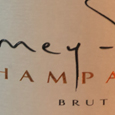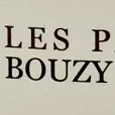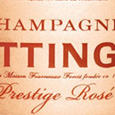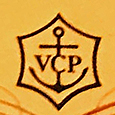2020 certainly hasn't been a year much worth celebrating, especially if you're a grower, vineyard worker, or producer in Champagne.
There is no single category of wine that has been more dramatically impacted by the COVID-19 pandemic than champagne.
As of July this year, shipments were down more than 25 percent, or about 3.3 million cases from the same period last year, according to Jean-Marie Barillère, president of the Union des Maisons de Champagne (UMC), the trade group for champagne houses, and co-president of the Comité Champagne (CIVC).
And between April and August 2020, it has been reported that the category's sales fell by one-third, the equivalent of approximately two billion US dollars in revenue. Some long-time Champenois have described it as the greatest decline in sales since the collapse during the Great Depression, almost a century ago.
While the holidays are traditionally the biggest sales period for champagne, the fearful global outlook continues to be shaky. Champagne sales are forecast to be down 25% in 2020 by volume, though I would guestimate that is a low estimate. I've certainly seen the ripples in Canada since the spring when agents across the country started holding back on ordering premium wines, especially ones most Canadian consumers equivalate with celebrations. With few or no large-scale gatherings allowed in the country for most of the year and everyone's budgets tightening, champagne was the first category to be trimmed from agents' order roster. Predictably, now, there are many fewer bottles in our market than I've ever seen, with numerous stock-outs of champagnes usually in abundant supply at this time of year. BCLS caught up to the issue in November, racing to order hundreds of cases from the large champagne negociants at the very last minute so shelves would look cheery.
But as much as I track and taste champagne and miss finding familiar facings on shelves and lists across the country, I feel for the farmers and families making champagne.
By wide accounts, 2020 was an excellent vintage for quality and quantity in Champagne. Due to the current global economy, the 2020 harvest yields were lowered from the standard 10,800 kg/hectare to 8000 kg/hectare. That's a 22% decrease vs. 2019. The CIVC controls the yields annually to ensure an orderly market — preventing a glut of wines on the market and keeping prices healthy for all producers. Producers can choose to use production above the maximum to replace lesser-quality reserve wines in their cellars or send the excess out to be distilled. Understandably, the government's distillation offer does not have a great deal of appeal. "The price for the distillation is at €78 per [100 litres], and the price of champagne on average is €1,200 per [100 litres]," said Barillère. "You can understand that this interests no one."
For growers, who own 90% of the land in Champagne (though the big houses and negociants control 85% of sales), lower yields directly translate to less income. If houses don't want to purchase the grapes above their allowed yields, the fruit will just be cut and left to rot on the ground.
Fortunately, in late August (coinciding with the start of harvest), Barillère and CIVC co-president Maxime Toubart, president of the Syndicat Général des Vignerons de la Champagne (SVG), agreed to restrict yields to 3.12 tons per acre (8000 kg/hectare). But an additional 0.45 tons per acre could be harvested and kept in reserve to be used to calibrate volume based on final 2020 sales figures. The combined 3.57 tons per acre corresponds to 19.2 million cases total production for the entire Champagne appellation. That's 25 percent less than the 2019 harvest, which was already 10 percent below average levels in recent years. But it mirrors the predictions for champagne sales in 2020, hopefully somewhat balancing out supply and demand.
At this time, and in this season more than ever, it's important to use our purchasing power wisely. If you are buying fizz to celebrate with your bubble, think about directing your purchases to support the growers and families and the large commercial houses so that everyone can make a living producing these wines, including local agencies that bring all the labels to our market. If we don't continue to purchase, even in a limited way, the smaller houses will lose their footing in this market, diminishing the charm of the champagne category. I'm planning to show gratitude this season by purchasing and sharing fizz from families all over the world, including Champagne.
Here are the champagnes we've tasted at GOW since our 2020 annual came out early last December:

 quicksearch
quicksearch











































